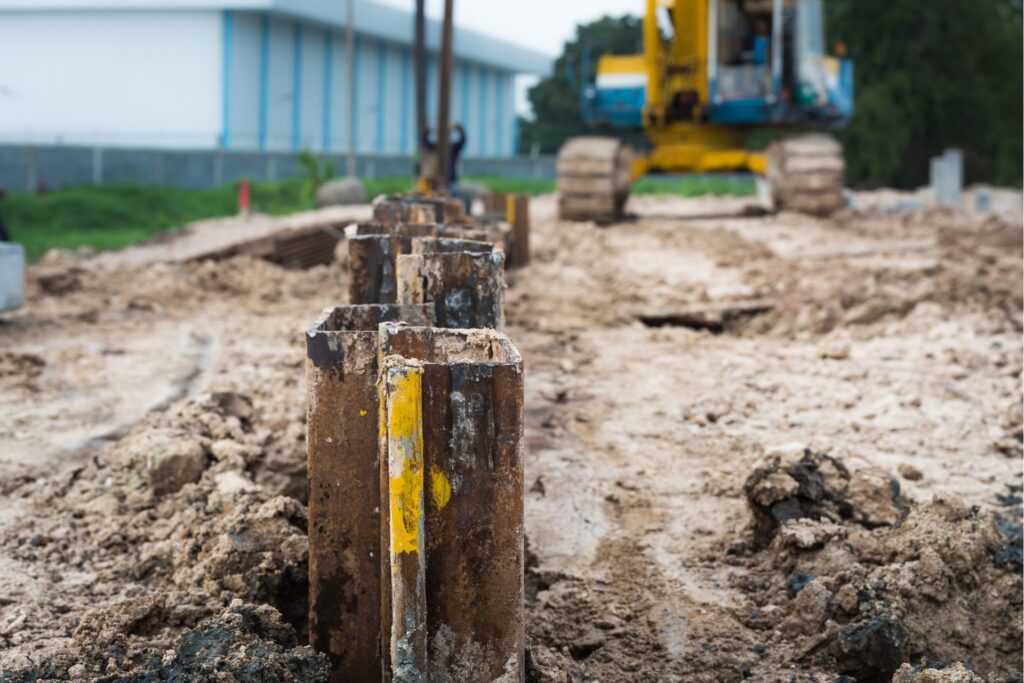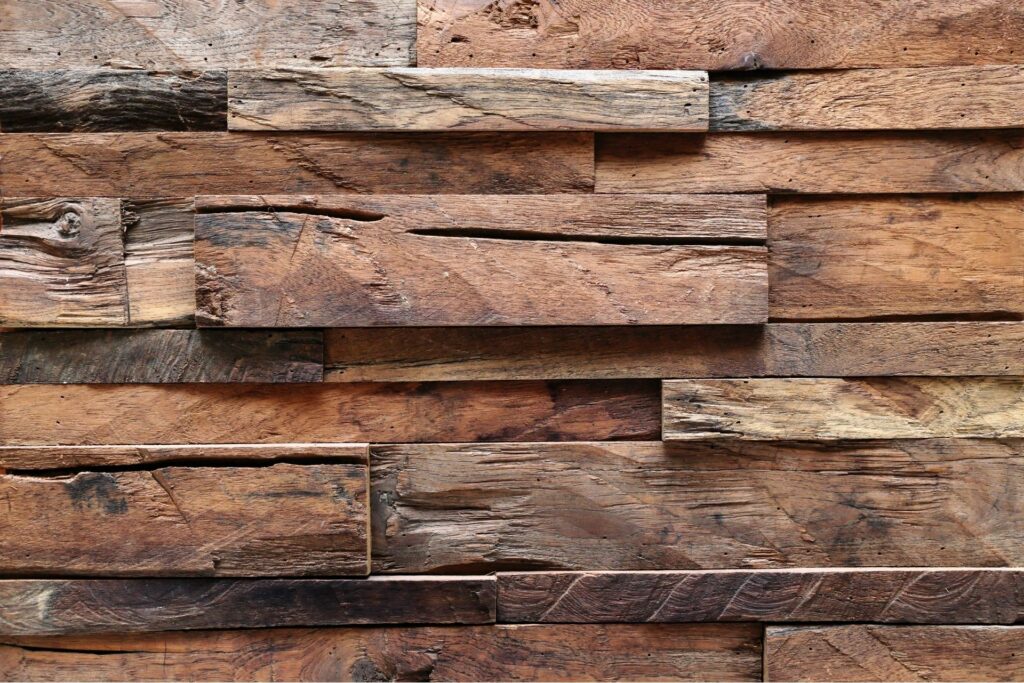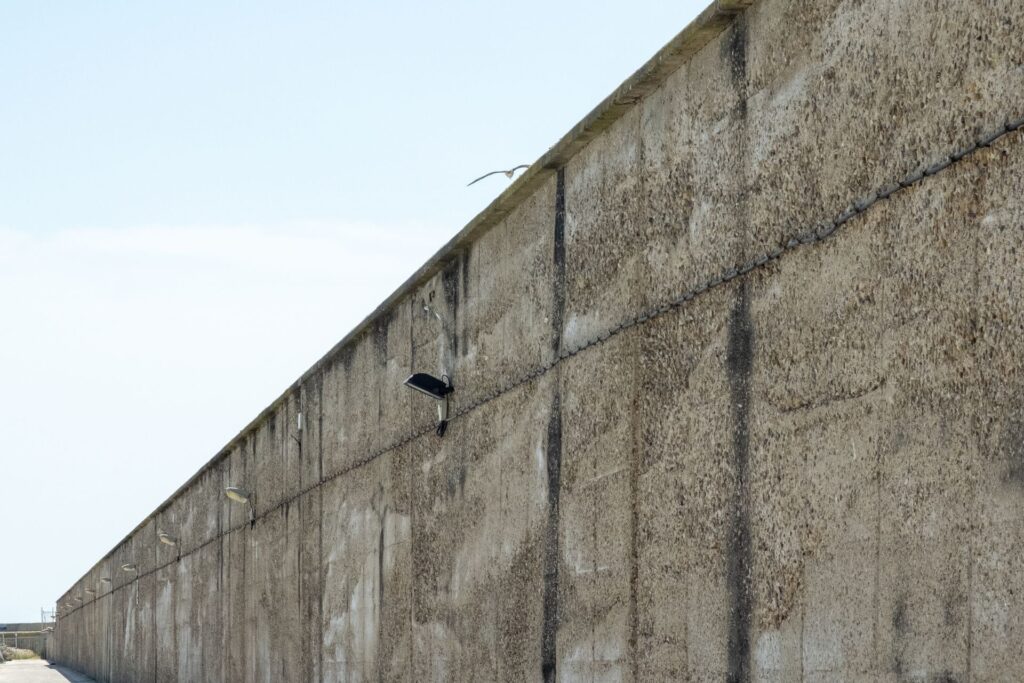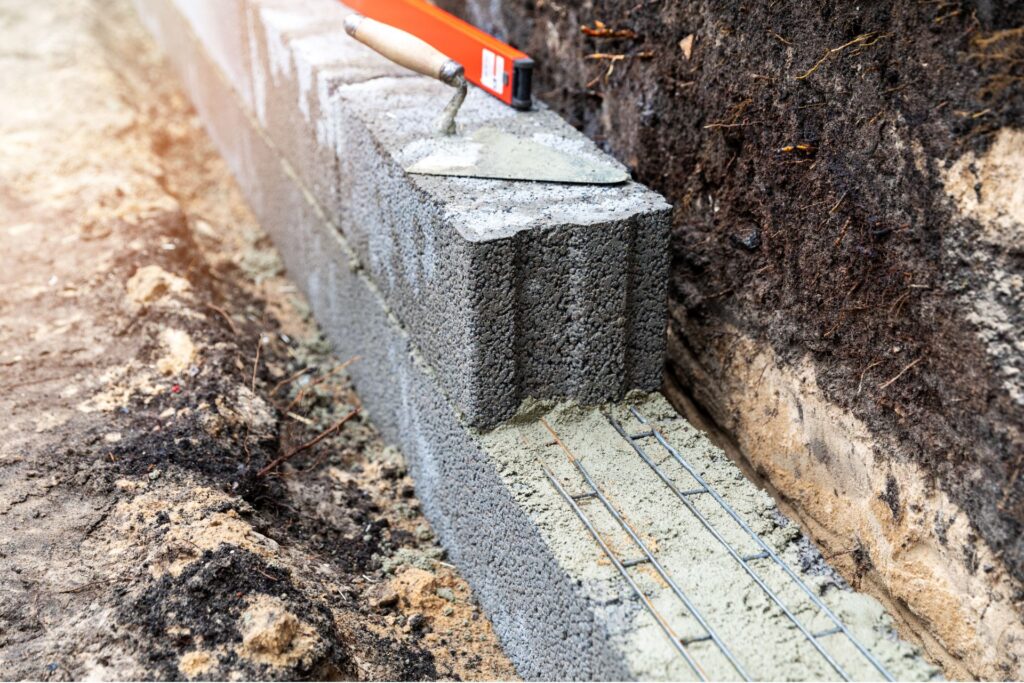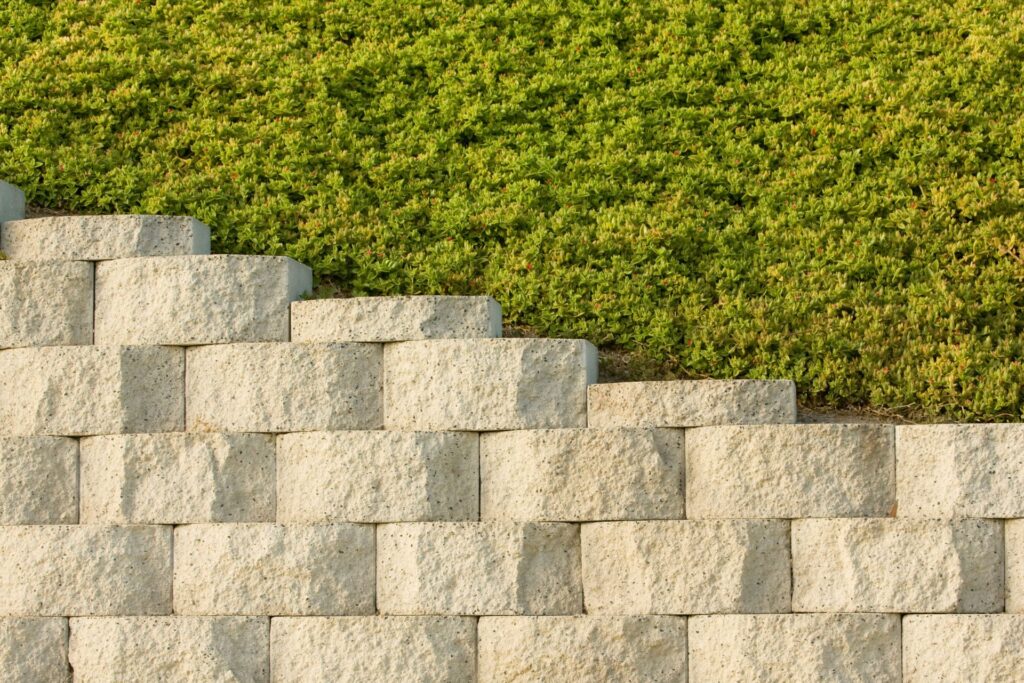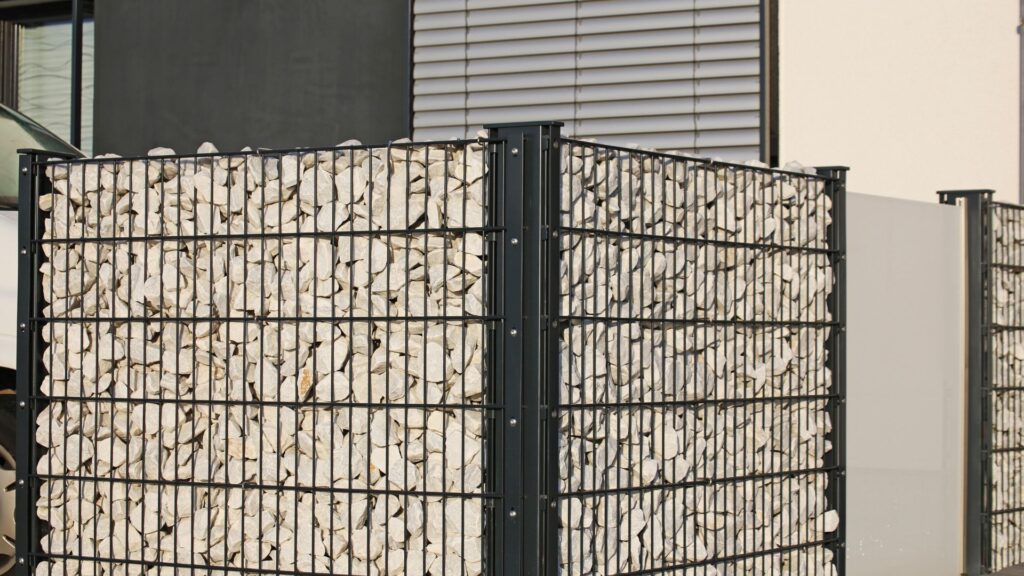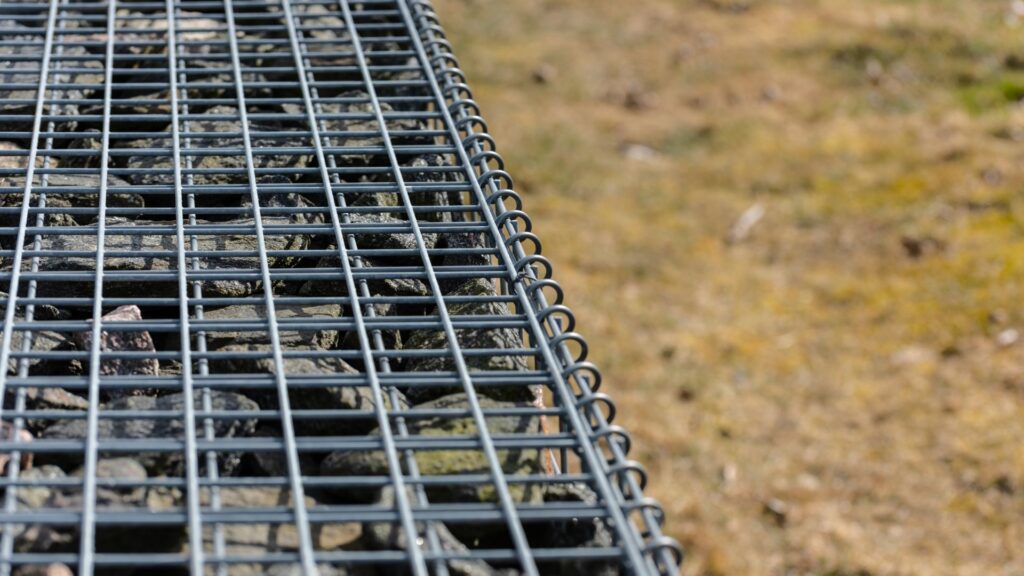Welcome to our comprehensive guide on fiberglass retaining walls in New Zealand, a cutting-edge solution for landscape and construction projects that transcends the conventional purpose of merely holding back soil. These walls play a pivotal role in protecting properties, enhancing aesthetic appeal, and combating erosion. The choice of materials for constructing retaining walls is critical, and fiberglass emerges as a superior option for its durability, cost-effectiveness, and versatility. Whether you’re a homeowner embarking on a landscaping project, a builder in search of reliable materials, or someone curious about the innovative applications of fiberglass in construction, this guide has been crafted with you in mind. We’ll delve into the benefits of fiberglass over traditional materials, tackle the specifics of designing and installing these structures in New Zealand’s unique climate, and by the end of this article, provide you with a well-rounded understanding to determine if fiberglass retaining walls are the right choice for your next project. Join us as we explore the world of fiberglass retaining walls, an innovative approach that is reshaping the landscape of New Zealand construction and design.
Fiberglass retaining walls in New Zealand offer a modern and efficient solution for landscaping and construction projects. Known for their durability, cost-effectiveness, and versatility, these retaining walls are an excellent choice for anyone looking to protect their property while enhancing its aesthetic appeal. Fiberglass stands out against traditional materials like wood, concrete, and steel by offering superior resistance to the diverse New Zealand climates, low maintenance requirements, and easy customization options. Whether you’re a homeowner, builder, or simply exploring innovative building materials, fiberglass retaining walls provide a sustainable, visually appealing, and sturdy option that suits a wide range of project needs.
- Understanding Retaining Walls
- Why Fiberglass? Material Matters
- The Advantages Of Fiberglass Retaining Walls In NZ
- Planning And Design Considerations
- Installation Process Demystified
- Case Studies
- Maintenance And Care
- Cost Analysis
- Choosing The Right Supplier In NZ
- FAQs: About Fiberglass Retaining Walls NZ
- Conclusion
- Find A Professional Retaining Wall Builder Near You!
Understanding Retaining Walls
Retaining walls, a cornerstone in the world of construction, serve the essential function of holding back soil in areas where a sudden change in elevation occurs. These structures are vital for preventing erosion and managing earth stability, ensuring that landscapes and buildings remain secure and intact. Beyond their practical use, retaining walls also possess an aesthetic aspect, often enhancing the visual appeal of a property by creating terraced landscaping opportunities.
The Historical Context
The concept of retaining walls is far from modern, tracing back to ancient civilizations. For example, the terraces of the Incas, which allowed for agriculture on steep slopes, and the bulwarks of ancient Mesopotamia showcase the early understanding and application of these structures. Over centuries, the materials and techniques have evolved, but the fundamental purpose remains unchanged: to support and stabilize land.
Types of Retaining Walls
Retaining walls come in various designs, each suited to different landscapes and pressures. Here’s a quick overview:
Gravity Walls: These rely on their mass (stone, concrete, or other heavy materials) to resist the pressure from the soil behind them. They are usually best for lower heights.
Cantilevered Walls: Engineered with reinforced concrete, these walls use a lever-arm mechanism to provide support, allowing them to be taller than gravity walls with less material.
Sheet Piling Walls: Typically used in soft soils and tight spaces, these walls are made from steel, vinyl, or wood planks driven into the ground.
Anchored Walls: This type includes additional support from cables or other means anchored into the soil or rock behind them. They can be used to provide extra strength to any of the above types of walls.
Focus on Fiberglass
Fiberglass retaining walls represent a modern innovation in construction technology. Known for their strength and durability, these walls are increasingly favored for both residential and commercial projects. Fiberglass offers significant advantages, such as resistance to corrosion, ease of installation, and minimal maintenance. Furthermore, it can be molded into various textures and colors, providing an aesthetic flexibility that traditional materials lack.
Fiberglass retaining walls are particularly suited for environments where moisture or chemical exposure is a concern, making them an excellent choice for coastal areas or industrial sites. They combine functionality with a sleek, modern appearance, challenging the traditional notions of what retaining walls can be.
In conclusion, retaining walls play a crucial role in both the functionality and aesthetic appeal of landscapes and structures. From their historical roots to modern developments like fiberglass options, these walls are a testament to human ingenuity in adapting to the challenges of the environment. As we continue to push the boundaries of materials and design, retaining walls will undoubtedly remain a fundamental aspect of construction, blending the old with the new in the never-ending quest for stability and beauty.

Why Fiberglass? Material Matters
In the dynamic field of construction, selecting the right materials lays the foundation for efficient, durable, and sustainable projects. Among the plethora of options available to architects and builders, fiberglass emerges as a compelling choice. This section delves into the inherent properties of fiberglass as a construction material, juxtaposes it with traditional materials like wood, concrete, and steel, and evaluates its environmental footprint, showcasing why fiberglass is not just an alternative, but often the preferred choice for modern construction endeavors.
The Distinctive Properties of Fiberglass in Construction
Fiberglass, a composite material made from fine fibers of glass, is celebrated for its unique properties that make it highly suitable for a wide range of construction applications. Its lightweight nature stands out, significantly reducing transportation and installation costs and efforts compared to heavier counterparts. Despite its lightness, fiberglass boasts remarkable strength and durability, offering resistance to corrosion, weathering, and pest damage, which are common concerns with materials like wood and steel.
Thermal efficiency is another forte of fiberglass. Its low thermal conductivity makes it an excellent insulator, helping in the reduction of heating and cooling costs in buildings. This characteristic, combined with its ability to be molded into complex shapes, allows for innovative architectural designs that are not only aesthetically pleasing but also energy efficient.
How Fiberglass Stacks Up Against Traditional Materials
When compared to traditional construction materials, fiberglass offers a compelling array of benefits. Unlike wood, which can suffer from rot, termites, and moisture-related deformations, fiberglass maintains its integrity over time, requiring minimal maintenance. This resilience grants it a longer lifecycle than many wood-based products.
Against concrete and steel, fiberglass asserts its superiority through its resistance to corrosion and its lightweight nature. While concrete is prone to cracking and steel to rust, fiberglass remains stable and intact in various environmental conditions, including salty coastal atmospheres and chemically aggressive environments. Additionally, the energy required to produce and transport fiberglass is significantly lower than that for steel or concrete, considering its lighter weight and the efficiency of its manufacturing process.
Environmental Impact: The Sustainability of Fiberglass
The sustainability of construction materials is a pivotal consideration in today’s environmentally conscious world. Fiberglass, with its long lifespan and minimal maintenance requirements, contributes to reducing waste and energy consumption over the lifespan of a building. Its insulating properties further enhance energy efficiency, leading to lower carbon footprints for structures that incorporate it.
Moreover, the industry is making strides in recycling fiberglass, thereby mitigating one of the traditional criticisms of its use. Innovations in repurposing decommissioned fiberglass products into new construction materials are increasing, contributing to a circular economy and reducing the need for raw materials.
The decision to utilize fiberglass in construction projects is underpinned by its unique properties, including durability, lightweight nature, and thermal efficiency, which offer significant advantages over traditional materials like wood, concrete, and steel. Coupled with its lower environmental impact and contribution to energy-efficient building designs, fiberglass stands out as a material that not only meets the demands of modern construction but also aligns with the goals of sustainability and innovation. As the construction industry evolves, the importance of materials like fiberglass that offer a blend of performance and environmental responsibility cannot be overstated, making it a material of choice for future-forward construction projects.

The Advantages Of Fiberglass Retaining Walls In NZ
Creating a stunning, functional outdoor space in New Zealand comes with its own set of challenges, particularly when it comes to choosing the right materials that can withstand the country’s unique climate. One solution that has gained popularity among homeowners and landscape architects alike is the use of fiberglass retaining walls. In this guide, we dive into the advantages of fiberglass retaining walls in NZ, highlighting their durability, ease of maintenance, cost-effectiveness, and aesthetic appeal.
Durability in Diverse NZ Climates
New Zealand’s climate is as diverse as its landscape, ranging from the sub-tropical North to the more temperate South. This variation demands materials that can withstand everything from coastal salt spray to alpine snow. Fiberglass retaining walls are renowned for their resilience. They are not prone to rust, rot, or corrosion, making them an ideal choice for any NZ environment. Unlike traditional materials, fiberglass stands strong against the elements, ensuring that your retaining walls remain intact and functional for years to come.
Maintenance: Ease of Care Compared to Other Materials
The maintenance of outdoor materials can often be time-consuming and costly. However, fiberglass retaining walls require minimal upkeep. They do not need regular painting or sealing like wood or concrete walls. A simple wash down with a hose will usually suffice to keep them looking as good as new. This ease of maintenance is a significant advantage for those looking to reduce both the time and expense associated with the upkeep of their outdoor spaces.
Cost-effectiveness Over the Long Term
While the initial investment in fiberglass retaining walls may be higher compared to some other materials, their longevity, and low maintenance requirements make them a cost-effective solution over the long term. The durability of fiberglass means that the walls are less likely to need repairs or replacement, saving homeowners money and hassle. Additionally, the reduced maintenance needs further contribute to the overall cost savings, making fiberglass retaining walls a smart financial choice for NZ homeowners.
Aesthetics: Customization and Finishing Options
Fiberglass retaining walls offer a wide range of customization and finishing options, allowing homeowners to achieve the exact look they desire for their outdoor spaces. Whether you’re looking for a particular color, texture, or finish, fiberglass can be adapted to suit your aesthetic preferences. This versatility ensures that your retaining walls not only perform their function but also enhance the overall appearance of your landscape.
In conclusion, the advantages of fiberglass retaining walls in New Zealand are clear. Their ability to withstand diverse climates, combined with ease of maintenance, cost-effectiveness, and aesthetic flexibility, makes them an excellent choice for anyone looking to enhance their outdoor space. Whether you’re embarking on a new landscaping project or looking to upgrade existing structures, consider the benefits of fiberglass retaining walls for a durable, low-maintenance, and visually appealing solution.

Planning And Design Considerations
Creating a comprehensive plan and engaging in detailed design considerations are crucial steps when embarking on construction projects, particularly when it comes to implementing fiberglass retaining walls. This guide aims to illuminate the essential stages of Planning and Design Considerations, ensuring that your project not only meets but exceeds expectations. With an emphasis on a natural and engaging tone, let’s delve into the critical components of this process, focusing on on-site analysis, design principles for fiberglass retaining walls, and navigating New Zealand’s regulatory landscape.
Site Analysis: The Foundation of Your Project
Before laying a single stone or drafting a preliminary design, understanding the importance of location and soil type through thorough site analysis cannot be overstated. The location of your project will influence every aspect of the construction process, from the choice of materials to the design’s sustainability and resilience. Similarly, soil type plays a pivotal role in determining the feasibility and durability of your retaining walls. For instance, sandy soils may require deeper foundations, while clay-rich soils might necessitate additional drainage solutions. A comprehensive site analysis ensures that your project is built on a solid foundation, both literally and metaphorically.
Design Principles for Fiberglass Retaining Walls
Fiberglass retaining walls are favored for their strength, durability, and ease of installation. However, to fully leverage these benefits, one must adhere to specific design principles tailored to fiberglass materials. Firstly, consider the wall’s height and the slope it needs to support, as these factors will influence the wall’s thickness and the type of fiberglass material used. Additionally, integrating proper drainage systems within the design is paramount to avoid water pressure buildup, which can compromise the wall’s integrity. Designing with aesthetics in mind is also crucial; fiberglass allows for versatility in textures and colors, enabling your retaining wall to complement its natural surroundings or the architectural style of nearby structures.
Obtaining Permits: Navigating NZ Regulations and Standards
In New Zealand, as in many countries, navigating the maze of regulations and standards is a critical step in the planning and design process. The Resource Management Act (RMA) and local council regulations dictate specific requirements for construction projects, including retaining walls. These regulations ensure that constructions are safe, sustainable, and in harmony with the environment. To streamline the permit acquisition process, it’s advisable to engage with professionals who are familiar with the local regulatory landscape. They can provide invaluable assistance in preparing the necessary documentation and ensuring that your project complies with all relevant standards and regulations.
By emphasizing these crucial aspects of Planning and Design Considerations, your project can move forward with confidence. Remember, thorough site analysis lays the groundwork for your project, adhering to design principles specific to fiberglass retaining walls ensures durability and aesthetic appeal, and navigating New Zealand’s regulatory framework secures your project’s legal viability. Each of these steps contributes to a successful, sustainable, and compliant construction project, setting a benchmark for excellence in the industry.
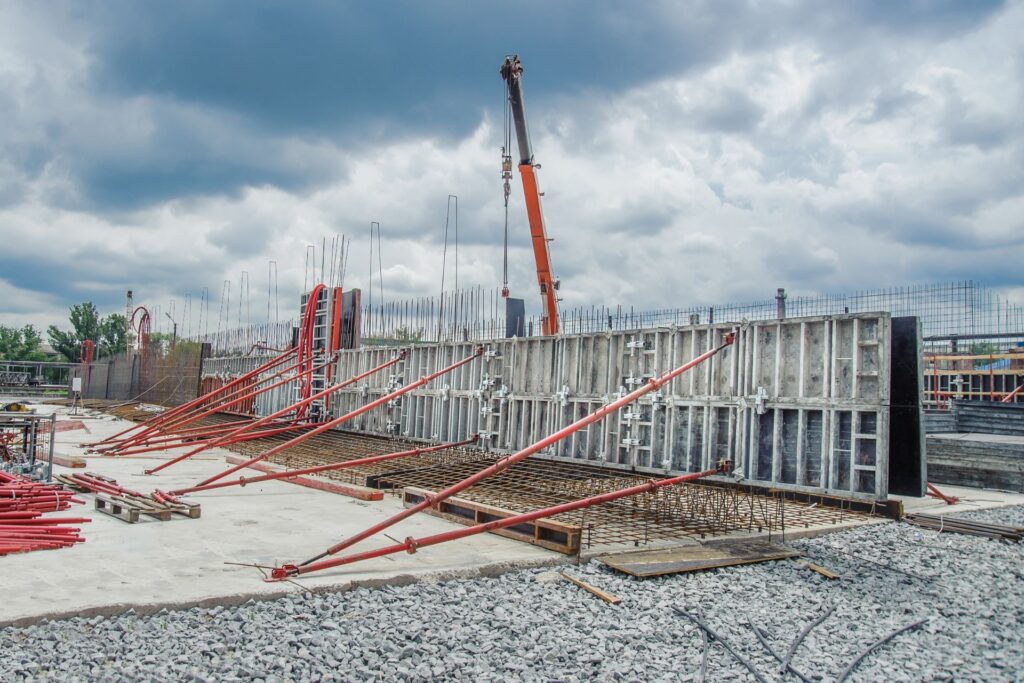
Installation Process Demystified
In this detailed guide, we delve into the intricacies of installing a fiberglass retaining wall, a popular choice among homeowners for its durability and aesthetic appeal. We break down the installation process into manageable steps, weigh the pros and cons of professional versus DIY installation, and highlight common pitfalls to ensure your project is a success.
Step-by-Step Guide to Installing a Fiberglass Retaining Wall
1. Planning and Preparation: Before diving into the installation, it’s crucial to plan. Assess the area where the retaining wall will be installed. Consider the height of the wall and the slope of the land. Obtain any necessary permits from your local building department to ensure your project complies with local codes and regulations.
2. Materials and Tools: Gather all necessary materials and tools before starting. You’ll need fiberglass panels, a gravel base, drainage pipes, a level, a shovel, and personal protective equipment.
3. Ground Preparation: The foundation is key to the longevity of your retaining wall. Dig a trench about the width and depth recommended by the manufacturer. Ensure the trench is level and compact the base with a hand tamper or a plate compactor.
4. Installing the Base: Lay a gravel base in the trench to aid in drainage and prevent water from accumulating behind the wall. The gravel layer should be at least 4 inches thick.
5. Setting the First Panel: Place the first fiberglass panel in the trench. Use a level to ensure it’s perfectly vertical. This step is crucial as it sets the alignment for the rest of the wall.
6. Backfill and Drainage: As you install each panel, backfill the area behind the wall with gravel to promote drainage. Install drainage pipes behind the wall to prevent water pressure from building up.
7. Completing the Wall: Continue installing the panels, checking for level and alignment. Once all panels are installed, backfill the remaining area with soil and compact it.
8. Finishing Touches: Add topsoil, plants, or landscaping features to enhance the appearance of your retaining wall and integrate it into your garden or yard.
Professional vs. DIY Installation: Assessing What’s Best for Your Project
DIY Installation: Opting for a DIY installation can be rewarding and cost-effective for those with the necessary skills and tools. It allows for flexibility and personal involvement in the project. However, it’s essential to honestly assess your capabilities and the complexity of the project before deciding to tackle it on your own.
Professional Installation: Hiring professionals can increase the project’s cost but ensures that the installation is done efficiently and correctly, adhering to local codes and regulations. Professional installers can also offer valuable advice on design and materials and often provide warranties for their work.
Common Pitfalls and How to Avoid Them
1. Inadequate Planning: Failing to plan is a common mistake that can lead to issues down the line. Ensure you have a clear design and have obtained all necessary permits before starting.
2. Poor Foundation: An improperly prepared foundation can cause the wall to shift or collapse. Take the time to properly compact and level the base.
Ignoring Drainage: Inadequate drainage can lead to water pressure build-up, which can damage the wall. Ensure proper drainage by installing gravel and drainage pipes.
Using Incorrect Materials: Using low-quality materials can affect the durability of your retaining wall. Invest in high-quality fiberglass panels and other materials recommended by professionals.
By following this comprehensive guide, you can demystify the installation process of a fiberglass retaining wall. Whether you choose a DIY approach or hire professionals, proper planning, and execution will ensure the longevity and effectiveness of your retaining wall, enhancing the beauty and value of your property.

Case Studies
When considering landscaping solutions, the importance of choosing the right materials cannot be overstated. In New Zealand, a land of varied terrains and climates, fiberglass retaining walls have emerged as a standout option. Through detailed case studies, this section aims to showcase the success stories of fiberglass retaining walls, offering before-and-after visuals and testimonials from satisfied customers. Moreover, it provides valuable lessons learned directly from the experiences of project managers and homeowners. Let’s dive in and explore how fiberglass retaining walls have transformed NZ landscapes.
Success Stories: Fiberglass Retaining Walls in Action
Fiberglass retaining walls have proven their worth across a plethora of New Zealand landscapes, from coastal properties bracing against erosion to hillside homes seeking stability and aesthetic appeal. These case studies highlight the versatility, durability, and cost-effectiveness of fiberglass as a material choice. For instance, a coastal retreat in the Bay of Plenty region faced significant erosion threats. The installation of a fiberglass retaining wall not only secured the land but also enhanced the property’s aesthetic, blending seamlessly with the natural surroundings.
Before and After: A Visual Testimony
Nothing speaks louder than visual evidence. Our collection of before-and-after images showcases the dramatic transformations achieved with fiberglass retaining walls. These visuals are accompanied by testimonials from homeowners who have witnessed the benefits first-hand. For example, a homeowner in Wellington had struggled with a sloping backyard that was barely usable. After the installation of a fiberglass retaining wall, the space was not only stabilized but also transformed into a beautiful, functional garden area. These testimonials underscore the impact of our solutions on enhancing property value and livability.
Lessons Learned: Insights for Future Projects
Every project offers a learning opportunity, and fiberglass retaining wall installations are no exception. Insights from project managers and homeowners provide a wealth of knowledge for those considering similar ventures. Common lessons include the importance of proper planning and preparation, the benefits of choosing quality materials, and the value of professional installation. For example, a project in Auckland highlighted the significance of thorough soil analysis before installation, ensuring the longevity and effectiveness of the retaining wall.
The case studies of fiberglass retaining walls in New Zealand landscapes illustrate not just the practical benefits of this material, but also its potential to enhance aesthetic appeal. The before-and-after visuals and testimonials paint a vivid picture of transformation, offering inspiration and confidence to those embarking on their landscaping projects. The shared lessons learned serve as a guide, emphasizing the importance of quality, preparation, and professional expertise. As more New Zealanders embrace the advantages of fiberglass retaining walls, these case studies stand as a testament to their value and versatility.
By sharing these success stories, visuals, and insights, we hope to provide a comprehensive understanding of how fiberglass retaining walls can make a significant difference in landscape management and design. Whether you’re a homeowner, project manager, or landscape enthusiast, there’s much to learn and be inspired by from these case studies.
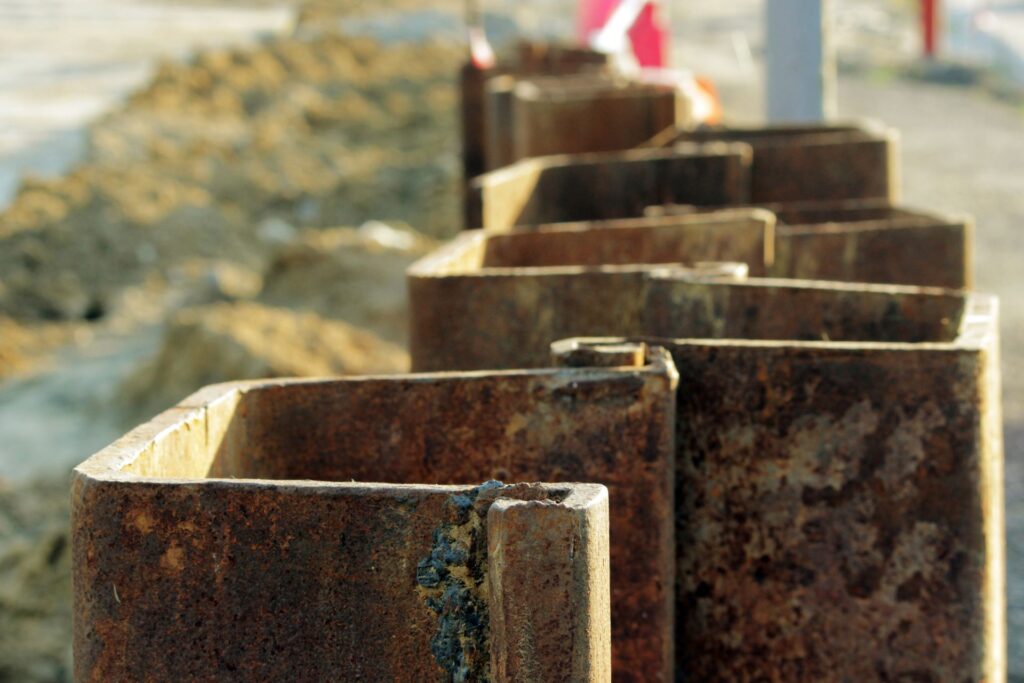
Maintenance And Care
Maintaining the integrity and appearance of fiberglass retaining walls is crucial for ensuring they continue to serve their purpose effectively while enhancing the aesthetic appeal of your outdoor space. This comprehensive guide provides homeowners and property managers with essential tips and strategies for the long-term care, inspection, and repair of fiberglass retaining walls. By following this advice, you can prolong the life of your retaining wall, prevent costly repairs, and ensure the safety and stability of your property.
Long-Term Care Tips for Fiberglass Retaining Walls
Regular Cleaning: To maintain the appearance and longevity of your fiberglass retaining wall, regular cleaning is essential. Use a soft brush and a mild detergent solution to remove dirt, grime, and algae buildup. Rinse the wall thoroughly with water after cleaning to avoid any residue.
Protection from UV Rays: Prolonged exposure to sunlight can cause the color of your fiberglass wall to fade over time. Consider applying a UV-resistant coating to the surface of the wall to protect it from sun damage and to maintain its vibrant appearance.
Vegetation Control: Overgrown vegetation can exert pressure on your retaining wall, potentially causing it to lean or bulge. Regularly trim plants and trees near the wall to prevent roots from growing into or under the structure.
Drainage Management: Proper drainage is vital to prevent water accumulation behind the retaining wall, which can lead to hydrostatic pressure and structural damage. Ensure that drainage systems, such as weep holes and drainage pipes, are clear of debris and functioning correctly.
How to Inspect Your Retaining Wall for Issues
Visual Inspection: Perform a regular visual inspection of your retaining wall for any signs of wear and tear. Look for cracks, bulging, leaning, or any areas where the wall appears to be separating from the ground.
Check for Water Damage: Inspect the area behind and around the wall for signs of water damage, such as pooling water or saturated soil. These can be indicators of inadequate drainage.
Monitor for Cracks: Small cracks can develop into larger issues if not addressed promptly. Monitor any cracks in the wall, noting their size and location, to determine if they are worsening over time.
Inspect the Foundation: Ensure that the foundation of your retaining wall is stable and has not settled or shifted. Changes in the foundation can affect the structural integrity of the entire wall.
Repairing Damages: When to Call in the Professionals
While minor repairs and maintenance can often be handled by the homeowner, certain situations require the expertise of a professional.
Significant Structural Damage: If your retaining wall shows signs of significant structural damage, such as large cracks, bulging, or leaning, it’s time to call in the professionals. These issues can pose safety risks and require specialized knowledge to repair effectively.
Drainage Problems: If you notice persistent drainage issues that cannot be resolved by clearing out drainage systems, professional intervention may be necessary to redesign or enhance the wall’s drainage capacity.
Extensive Repairs: For extensive repairs or if you’re unsure about the severity of the damage, consulting with a professional is the safest option. They can provide a comprehensive assessment and recommend the best course of action.
By implementing these maintenance and care strategies, you can ensure the durability and effectiveness of your fiberglass retaining wall. Regular inspections and prompt repairs are key to preventing small issues from becoming major problems, saving you time and money in the long run. Remember, when in doubt, consulting with a professional can provide peace of mind and ensure the longevity of your retaining wall.

Cost Analysis
When planning for a retaining wall, the financial aspect plays a crucial role in the decision-making process. In this guide, we’ll delve into the cost analysis of fiberglass retaining walls, focusing on initial investments, long-term benefits, comparisons with other materials, and budgeting tips to ensure your project aligns with your financial goals.
Initial Investment vs. Long-Term Benefits
The upfront cost of a fiberglass retaining wall encompasses not just the materials, but also design, labor, and any additional features like drainage systems. While it’s true that the initial investment might be higher than some alternatives, it’s essential to consider the long-term benefits. Fiberglass is renowned for its durability, resistance to corrosion, and minimal maintenance requirements. Over time, these qualities can translate into significant cost savings, as the need for repairs or replacements drastically decreases. The longevity of fiberglass can often justify the upfront cost, proving to be a wise investment for the future.
Cost Comparison with Other Materials
When evaluating the cost-effectiveness of fiberglass retaining walls, it’s crucial to compare them with walls constructed from other materials such as wood, concrete, or steel. Each material has its own set of advantages and price points. For instance, wood may be less expensive initially but requires more maintenance and has a shorter lifespan. Concrete is highly durable but can be more costly and less resistant to certain environmental factors compared to fiberglass. Steel, while strong, is susceptible to corrosion. Fiberglass strikes a balance between durability, maintenance, and cost, often emerging as a cost-efficient option in the long run, especially when considering its resilience to rot, pests, and weather-related damages.
Tips for Budgeting Your Fiberglass Retaining Wall Project
Budgeting for your fiberglass retaining wall project requires a detailed plan that considers all potential expenses. Here are some tips to help you manage your budget effectively:
Get Multiple Quotes: Always seek quotes from several contractors to compare prices and services. This will give you a clearer idea of the market rates and help you find the best value for your investment.
Consider the Total Cost: Look beyond the initial purchase price of materials. Factor in installation costs, maintenance expenses, and potential savings from durability and longevity.
Plan for the Unexpected: It’s wise to allocate a portion of your budget for unforeseen costs. Unexpected issues can arise during the construction process, and having a financial cushion can help mitigate these surprises.
Invest in Quality: Opting for high-quality materials and skilled labor might cost more upfront but can lead to lower expenses in the long run due to fewer repairs and replacements.
Do Your Research: Stay informed about the latest materials, technologies, and techniques in retaining wall construction. Knowledge can empower you to make cost-effective decisions that don’t compromise on quality.
By understanding the financial implications of fiberglass retaining walls through initial investment analysis, cost comparisons, and strategic budgeting, you can ensure that your project is both economically viable and successful. Remember, a well-planned retaining wall is not just an expense but an investment in your property’s future.
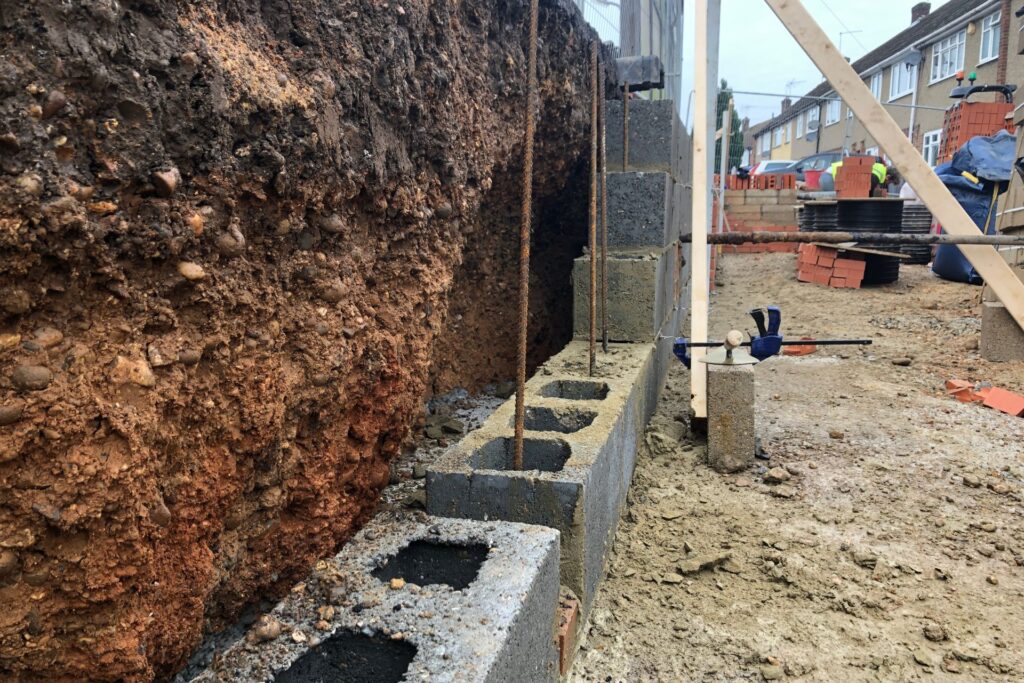
Choosing The Right Supplier In NZ
In the picturesque landscapes of New Zealand, where the terrain can be as challenging as it is beautiful, the right retaining solutions are key to managing land and water effectively. Fiberglass retaining walls have emerged as a popular choice due to their durability, strength, and ease of installation. However, the cornerstone of a successful project lies in choosing the right supplier. This guide aims to equip you with the knowledge to make an informed decision when selecting a fiberglass retaining wall supplier in NZ.
Understanding What to Look For
Choosing a fiberglass retaining wall supplier is more than just going for the lowest quote. It involves a comprehensive assessment of what the supplier brings to the table. Here are critical factors to consider:
Quality of Materials: The durability and lifespan of your retaining wall significantly depend on the quality of fiberglass used. Look for suppliers who offer high-grade materials that can withstand the harsh NZ weather conditions.
Experience and Expertise: Experience in the NZ market means familiarity with local environmental conditions, regulations, and building codes. An experienced supplier will provide invaluable advice and solutions tailored to your specific needs.
Customer Service and Support: From initial inquiries to after-sales support, good customer service is indispensable. A supplier who offers prompt, informative, and friendly service can make your project much smoother.
Project Portfolio: Request to see past projects or case studies. This will not only give you an idea of the supplier’s capabilities but also inspire confidence in their ability to deliver.
Sustainability Practices: With growing concerns over environmental impact, consider suppliers who adopt eco-friendly manufacturing processes and sustainability practices in their operations.
Top Fiberglass Suppliers in New Zealand: A Brief Overview
While it’s beyond the scope of this guide to list all reputable suppliers, New Zealand boasts a number of companies known for their quality fiberglass retaining walls. Companies such as Fiberglass Solutions NZ and RetainTech NZ have been mentioned in industry circles for their commitment to quality, innovation, and customer satisfaction. Conducting your own research and asking for recommendations from industry professionals can uncover the perfect supplier for your project.
Key Questions to Ask Before Making a Purchase
Before finalizing your supplier, arm yourself with information. Here are essential questions to ask:
- Can you provide references or examples of previous projects?
- What warranties or guarantees do you offer on materials and workmanship?
- How do you ensure the quality and durability of your fiberglass materials?
- Can you walk me through your manufacturing and quality control processes?
- What after-sales support and maintenance advice do you provide?
- How do you address sustainability and environmental impacts in your production?
- What are your lead times, and how do you manage delivery and logistics?
Choosing the right fiberglass retaining wall supplier in New Zealand is a pivotal decision that will impact the success and longevity of your project. By focusing on quality, experience, customer service, and environmental responsibility, you can select a supplier that not only meets but exceeds your expectations. Remember, the right questions can lead to the right answers, paving the way for a successful partnership and project.
Whether you’re an experienced contractor or embarking on your first retaining wall project, taking the time to thoroughly vet your supplier will ensure your retaining walls stand strong and beautiful, harmonizing with New Zealand’s stunning landscapes for years to come.

FAQs: About Fiberglass Retaining Walls NZ
Conclusion
In wrapping up the discussion on the benefits of choosing fiberglass for retaining walls in New Zealand, it’s essential to highlight the unparalleled advantages such as durability, corrosion resistance, and aesthetic flexibility that fiberglass offers, especially given NZ’s unique environmental challenges. This innovative material stands out for its sustainability, cost-effectiveness, and adaptability, making it a superior choice for future construction projects. As we encourage you to consider fiberglass retaining walls for your next endeavor, we also extend an invitation to take a proactive step towards embracing this forward-thinking solution. Contacting a professional for a personalized consultation or quote can be your gateway to leveraging the myriad benefits of fiberglass, ensuring your project not only meets but exceeds the standards of modern construction. By adopting fiberglass retaining walls, you’re not just making a smart choice for today but investing in a resilient and visually appealing future for your projects in New Zealand.
Find A Professional Retaining Wall Builder Near You!
- Retaining Wall Builders Hastings
- Retaining Wall Builders Hawkes Bay
- Retaining Wall Builders Kapiti
- Retaining Wall Builders Levin
- Retaining Wall Builders Lower Hutt
- Retaining Wall Builders Manawatu
- Retaining Wall Builders Napier
- Retaining Wall Builders Palmerston North
- Retaining Wall Builders Porirua
- Retaining Wall Builders Upper Hutt
- Retaining Wall Builders Wellington
- Retaining Wall Installation Manawatu
- Retaining Walls Nelson
- Retaining Walls Tauranga
- Retaining Wall Builders Auckland
- Retaining Wall Builders Hamilton
- Retaining Wall Builders Tauranga
- Retaining Walls Christchurch
- Retaining Walls Rotorua
About the Author:
Mike Veail is a recognized digital marketing expert with over 6 years of experience in helping tradespeople and small businesses thrive online. A former quantity surveyor, Mike combines deep industry knowledge with hands-on expertise in SEO and Google Ads. His marketing strategies are tailored to the specific needs of the trades sector, helping businesses increase visibility and generate more leads through proven, ethical methods.
Mike has successfully partnered with numerous companies, establishing a track record of delivering measurable results. His work has been featured across various platforms that showcase his expertise in lead generation and online marketing for the trades sector.
Learn more about Mike's experience and services at https://theleadguy.online or follow him on social media:

